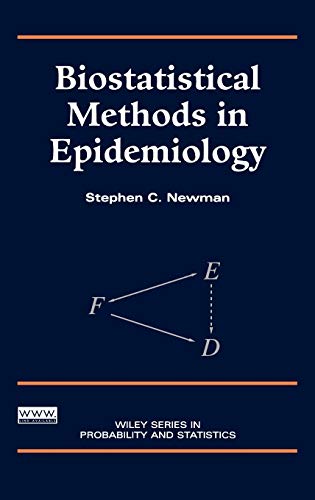(Ebook) Biostatistical Methods in Epidemiology by Newman S.C., (2001) ISBN 9780471369141, 0471369144
PrefaceThe aim of this book is to provide an overview of statistical methods that are importantin the analysis of epidemiologic data, the emphasis being on nonregressiontechniques. The book is intended as a classroom text for students enrolled in an epidemiologyor biostatistics program, and as a reference for established researchers.The choice and organization of material is based on my experience teaching biostatisticsto epidemiology graduate students at the University of Alberta. In that settingI emphasize the importance of exploring data using nonregression methods priorto undertaking a more elaborate regression analysis. It is my conviction that most ofwhat there is to learn from epidemiologic data can usually be uncovered using nonregressiontechniques.I assume that readers have a background in introductory statistics, at least to thestage of simple linear regression. Except for the Appendices, the level of mathematicsused in the book is restricted to basic algebra, although admittedly some of theformulas are rather complicated expressions. The concept of confounding, which iscentral to epidemiology, is discussed at length early in the book. To the extent permittedby the scope of the book, derivations of formulas are provided and relationshipsamong statistical methods are identified. In particular, the correspondence betweenodds ratio methods based on the binomial model, and hazard ratio methods basedon the Poisson model are emphasized (Breslow and Day, 1980, 1987). Historically,odds ratio methods were developed primarily for the analysis of case-control data.Students often find the case-control design unintuitive, and this can adversely affecttheir understanding of the odds ratio methods. Here, I adopt the somewhat unconventionalapproach of introducing odds ratio methods in the setting of closed cohortstudies. Later in the book, it is shown how these same techniques can be adaptedto the case-control design, as well as to the analysis of censored survival data. Oneof the attractive features of statistics is that different theoretical approaches oftenlead to nearly identical numerical results. I have attempted to demonstrate this phenomenonempirically by analyzing the same data sets using a variety of statisticaltechniques.I wish to expressmy indebtedness to Allan Donner, Sander Greenland, John Hsieh,David Streiner, and Stephen Walter, who generously provided comments on a draftmanuscript. I am especially grateful to Sander Greenland for his advice on the topicof confounding, and to John Hsieh who introduced me to life table theory when I was a student. The reviewers did not have the opportunity to read the final manuscriptand so I alone am responsible for whatever shortcomings there may be in the book.I also wish to acknowledge the professionalism and commitment demonstrated bySteve Quigley and Lisa Van Horn of John Wiley & Sons. I am most interested inreceiving your comments, which can be sent by e-mail using a link at the websitewww.stephennewman.com.Prior to entering medicine and then epidemiology, I was deeply interested in aparticularly elegant branch of theoretical mathematics called Galois theory. Whilestudying the historical roots of the topic, I encountered a monograph having a prefacethat begins with the sentence “I wrote this book for myself.” (Hadlock, 1978). Afterthis remarkable admission, the author goes on to explain that he wanted to constructhis own path through Galois theory, approaching the subject as an enquirer ratherthan an expert. Not being formally trained as a mathematical statistician, I embarkedupon the writing of this book with a similar sense of discovery. The learning processwas sometimes arduous, but it was always deeply rewarding. Even though I wrotethis book partly “for myself,” it is my hope that others will find it useful.
*Free conversion of into popular formats such as PDF, DOCX, DOC, AZW, EPUB, and MOBI after payment.


